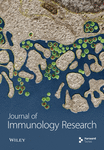Second-hand Smoke Increases Nitric Oxide and Alters the IgE Response in a Murine Model of Allergic Aspergillosis
Abstract
This study was performed to determine the effects of environmental tobacco smoke (ETS) on nitric oxide (NO) and immunoglobulin (Ig) production in a murine model of allergic bronchopulmonary aspergillosis (ABPA). Adult BALB/c mice were exposed to aged and diluted sidestream cigarette smoke from day 0 through day 43 to simulate “second-hand smoke”. During exposure, mice were sensitized to soluble Aspergillus fumigatus (Af) antigen intranasally between day 14 and 24. All Af sensitized mice in ambient air (Af + AIR) made elevated levels of IgE, IgG1, IgM, IgG2a and IgA. Af sensitized mice housed in ETS (Af + ETS) made similar levels of immunoglobulins except for IgE that was significantly reduced in the serum and bronchoalveolar lavage (BAL). However, immunohistochemical evaluation of the lung revealed a marked accumulation of IgE positive cells in the lung parenchyma of these Af + ETS mice. LPS stimulation of BAL cells revealed elevated levels of NO in the Af + AIR group, which was further enhanced in the Af+ETS group. In vitro restimulation of the BAL cells on day 45 showed a TH0 response with elevated levels of IL3, 4, 5, 10 and IFN-γ. However, by day 28 the response shifted such that TH2 cytokines increased while IFN-γ decreased. The Af + ETS group showed markedly reduced levels in all cytokines tested, including the inflammatory cytokine IL6, when compared to the Af+AIR group. These results demonstrate that ETS affects ABPA by further enhancing the NO production and reduces the TH2 and the inflammatory cytokines while altering the pattern of IgE responses.




